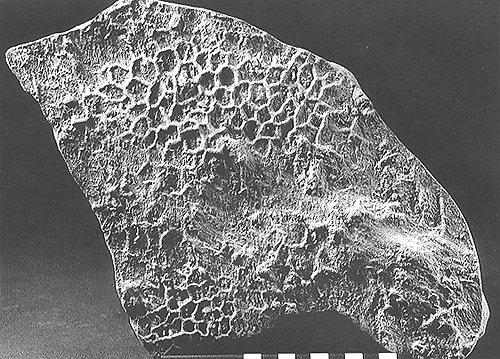
Problematic traces: Palaeodictyon
Plate 159

Problematic traces: Palaeodictyon
Plate 159
Together with Helminthoidea, this honeycombed trace fossil is relatively common in turbiditic formations, although it was originally impressed not on turbidite beds themselves but on interbedded pelagic mud. This is demonstrated by the distortion of the hexagonal cells and the lacerations of the "net," which were caused by the arrival of a current (see also plate 93). The same current laid down the sand or silt the cast is made of.
All one can say about the animal responsible for Palaeodictyon, which is interpreted as a feeding trace, is that it had methodical habits, like Zoophycos and Helminthoidea. While at intermediate water depths, feeding strategies lead to shallow but still three-dimensional structures, deep-water traces seem to affect only a thin layer of sediment. Such superficial traces, or trails, plus some vertical burrows, are grouped in an assemblage of ichnofossils indicative of maximum depth in marine paleoen-vironments, the so-called Nereites ichnofacies. Other assemblages characterize marine environments of intermediate depth (shelf to slope, with reference to Modern continental margins) and shallow depth (up to the intertidal and littoral zone), and continental environments, respectively.
In conclusion, trace fossils can be used as paleobathymetric indicators, but recognizing assemblages or associations is safer than relying on individual traces.
| Photo: P. Ferrieri 1992. |